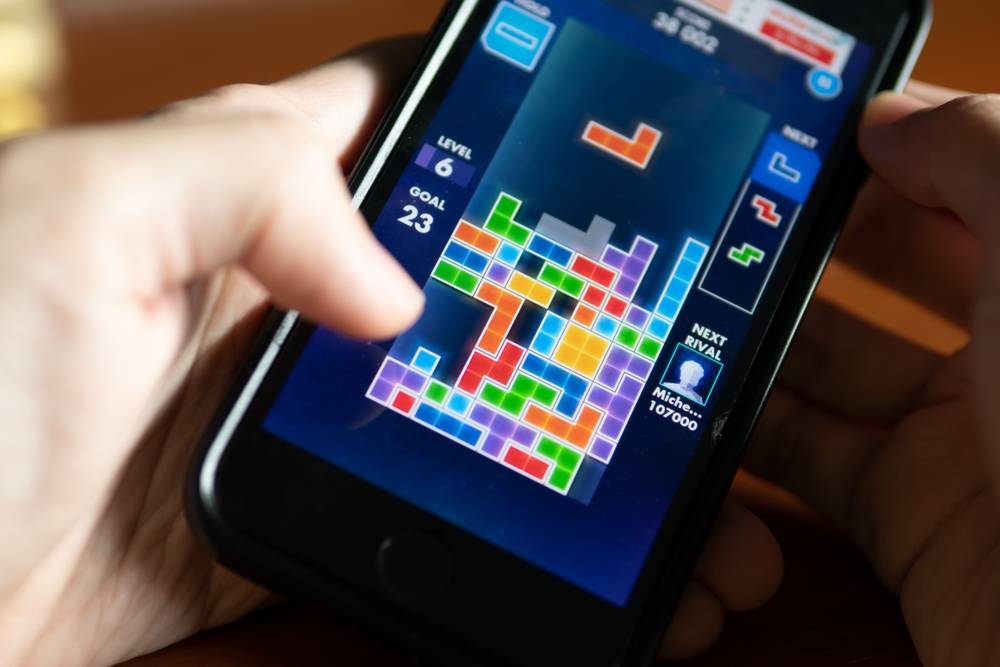Tetris for PTSD May Help Relieve Trauma Symptoms
Studies reveal that playing Tetris could reduce flashbacks and distressing memories by over 60%, offering a unique way to ease PTSD symptoms.
The idea of using Tetris for PTSD comes from studies in cognitive science and brain research. Scientists know that the brain has limited resources to process information, especially for tasks that involve visual and spatial thinking.
@drpriaphd A growing body of research has proposed playing Tetris as an adjunctive, preventative intervention to help reduce intrusive symptoms after a traumatic event. #traumatherapy #traumatok #drpriaphd #newyorktherapist #therapytiktok #therapytok #psychology #emdr #greenscreen ♬ original sound – Dr. Pria, PhD
Tetris is a game that uses these same brain resources. So, the theory is that playing Tetris after a traumatic event might “distract” the brain and stop it from fully processing traumatic memories, like flashbacks.
Emily Holmes, Professor of Psychology and leader of one of the studies, explains, “An intrusive memory is a visual memory of a traumatic event. Tetris also requires imagination and vision. Your brain can’t do two things at once, so this interrupts.”
Holmes believes this mental interference can block the consolidation of traumatic memories, potentially reducing flashbacks.
How Tetris Competes with Trauma Memories in the Brain
When someone plays Tetris, the brain focuses on the game, using the same resources that would normally be involved in processing traumatic memories.
This idea also builds on something called the “memory consolidation window.” This is a few hours after a traumatic event when the brain is still storing the memory. Playing Tetris during this time could interrupt the brain’s ability to store the trauma deeply, reducing the chances of future flashbacks.
One study showed a 64% drop in targeted intrusive memories when PTSD patients played Tetris after being reminded of their trauma.
Tetris as a Cognitive Vaccine for Flashbacks
One of the most fascinating discoveries about Tetris for PTSD is its potential to act as a “cognitive vaccine” against flashbacks.
Flashbacks are a core symptom of PTSD, occurring when trauma memories intrude into daily life. Research shows that playing Tetris in the hours after trauma can reduce the frequency of these flashbacks. A study using the Trauma Film paradigm found that participants who played Tetris for 10 minutes experienced 62% fewer flashbacks. This reduction occurred over the next week compared to those who did no task at all.
By engaging the brain’s visual and spatial working memory, Tetris may stop trauma memories from becoming deeply embedded. Researchers are now exploring how this game could serve as an early, easy-to-apply intervention for individuals at risk of PTSD. This may reduce the need for more intensive treatments later.
Read more: NUH Trauma Centre Enhances Safety for Vulnerable Groups
How Tetris Boosts Brain Function and Reduces PTSD Symptoms
Additionally, Tetris has been compared to other tasks to test its effectiveness in reducing PTSD symptoms. A study with 54 participants found that those who played Tetris four days after a traumatic event had a 50% reduction in intrusive memories (flashbacks).
In contrast, the control group, who did no task, experienced minimal change. This suggests that Tetris’s visuospatial demands make it particularly useful for preventing the consolidation of traumatic memories, unlike other cognitive tasks.
Tetris Offers a Low-Risk, Accessible Solution for PTSD Management
Another key benefit of using Tetris for PTSD is its accessibility and low-risk nature. Unlike traditional therapies such as medication or extensive psychotherapy, Tetris is non-invasive and easy to use. It does not require specialised equipment, and most people are familiar with the game or can quickly learn to play it.
This makes Tetris appealing in situations where access to mental health care is limited, or immediate interventions are necessary. First responders or military personnel could use Tetris after traumatic events to manage symptoms and prevent long-term PTSD. Since Tetris can be played on almost any device, including smartphones, it offers a practical tool for use in various settings.
Holmes hopes early interventions, such as using Tetris shortly after trauma, can prevent the onset of PTSD. “The current standard treatment doesn’t begin until after people develop the condition,” she explained, stressing the importance of quick action after trauma.
She added, “Anything visual and engaging could have a similar effect,” but cautioned, “Other engrossing activities using other parts of the brain, such as number or word activities, may not work, or make things worse.”
Considerations for Tetris as PTSD Therapy
Despite its potential, there are some challenges to using Tetris as a PTSD intervention. One issue is timing.
Tetris appears to be most effective when used shortly after a traumatic event, during the critical memory consolidation window. This limits its use in cases where trauma has already been deeply encoded into memory. For individuals whose PTSD symptoms have been present for months or years, Tetris may not offer the same benefits as it does for early intervention.

